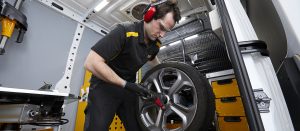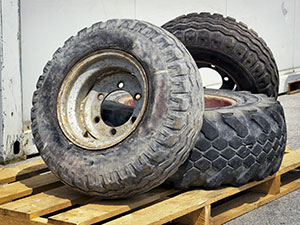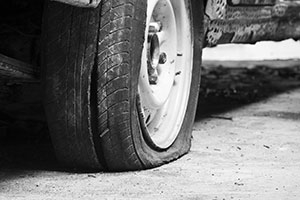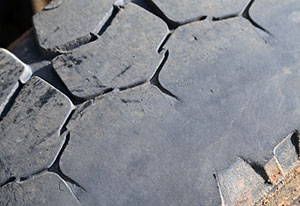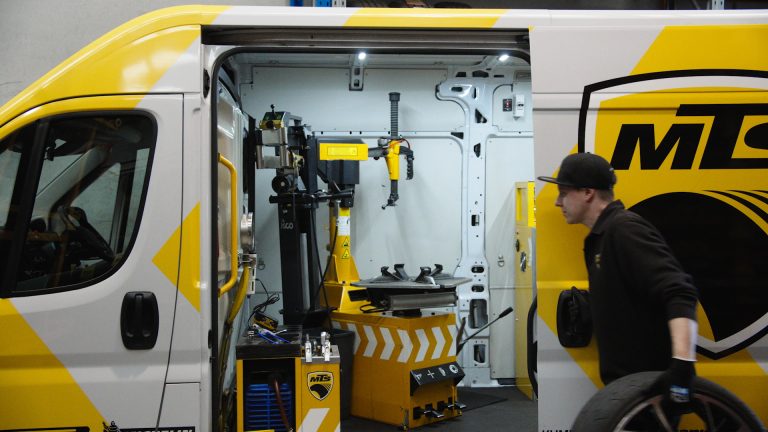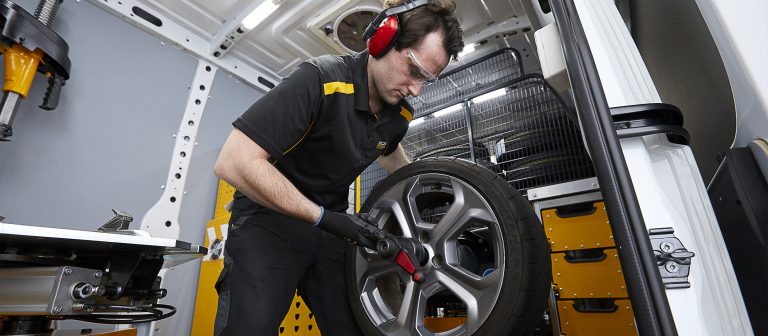01 Oct 2017
How to change a tyre – 4 simple steps
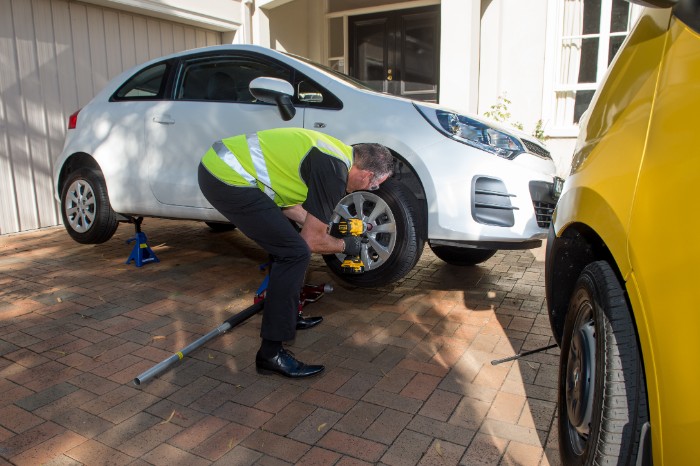
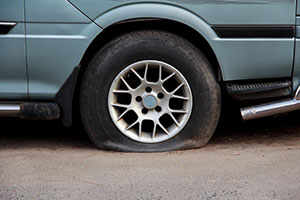
Whether you put too much faith in the life span of your balding tyres, ran over a nail or annoyed your neighbours… a flat tyre is a flat tyre, and they are all dealt with in the same way – out with the old, in with the new. A flat tyre is always a bit of a vibe killer, and they seem to occur at the worst of times, when it isn’t financially viable, or when you are in a rush to be somewhere. Having said this, it isn’t a time to panic, it’s important to stay calm, think logically and stay safe.
Safety first! Stop In A Safe Place
Take a deep breath, pull over somewhere safe if you haven’t already. It’s important to ensure wherever you pull over is level, so when you jack the car up you are able to get the damaged tyre off and replace it easily. Driving on a punctured tyre isn’t ideal, however if you need to do so to find somewhere safe to be able to change your tyre, It won’t be the end of the world. Once you have found a safe area with no risk to you or other drivers to carry out your tyre change, put your car in drive if it is an automatic (or in gear for manuals) and ensure that the handbrake is on. It’s also a good idea to put your hazards on in order to signal to other drivers that you have broken down & that your car is stationary.
If your car is equipped with a reflective advance warning triangle, be sure to set this up at least 10 metres in advance of your car to warn approaching traffic. Never change a tyre with your back to ongoing traffic, and never get under a car while it’s jacked up.
What do you need to change a tyre?
There are a few important basic bits of equipment which are necessary to be able to perform a tyre change. In most cases, all of these items come with and are stored in your car.
- Car Jack
- Lug wrench / wheel brace
- Fully inflated spare tyre
- Vehicle owners manual
The tools will usually be in the spare tyre in the boot, however if you can’t find them check the owners manual. The manual will also tell you where to place the jack, this is important as the jack’s point of contact to the car needs to be strong enough to hold its weight and not damage the car.
How long does it take to change a tyre?
Once you have located the tools you will need, you are well underway! It now shouldn’t take more than 15 minutes to take off the punctured tyre and replace it with the spare. Changing your own tyre will provide you with a sense of fulfillment, and once the stress of the whole ordeal is over, you’ll be able to share your knowledge with your friends and family!
How to change a flat tyre: Step By Step Guide
Step 1: Jack the car up 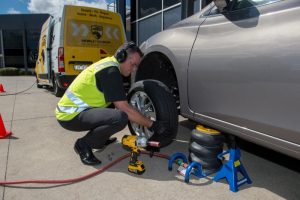
Once you have found the right spot to place the car jack, start to turn the handle clockwise. You’ll notice the car slowly start to rise up and take pressure off of the corner of the car in which the jack is placed. Keep turning the handle until the flat tyre is a few centimeters off the ground
Step 2: Loosen the wheel nuts

In this step, you are loosening the wheel nuts, which are essentially the ‘screws’ in which keep the wheel on tight to the car. Use the wheel brace tool (pictured below) and place it on one of the wheel nuts, use force to turn the nut in an anti-clockwise direction until it is loose enough to twist off completely by hand. If the nut is stuck and you aren’t able to get it to turn by hand, use your body weight by pushing down on the wheel brace with your leg. Be sure to hold on to the car to keep your balance as you do this. If this still isn’t enough, call Mobile Tyre Shop to organise one of our experienced technicians to come out and replace your tyre for you. If you were able to get all the wheel nuts off, congratulations we’re nearly there! Be sure to put the wheel nuts in a safe spot as they are vital for putting on the spare tyre.
Step 3: Remove the flat tyre and wheel 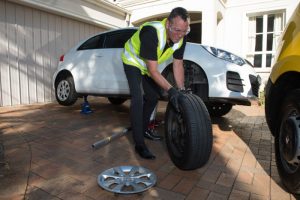
Now that the wheel nuts have been removed you should be able to remove the loose wheel. If by chance the wheel is stuck, give it a good kick to unjar it – don’t worry, it won’t kick back..! Sometimes if the wheel hasn’t been changed in a while a build up of rust and/or corrosion makes the wheel slightly harder to get off. Now it’s time to take the punctured wheel and put it in the spot which you got the spare wheel from, and put on the new one!.
Step 4: Putting on the spare tyre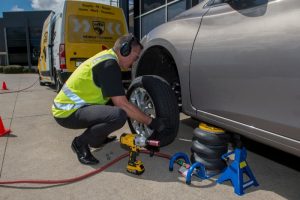
This step, simply put, is the exact same process of step 3, however in complete reverse. You are placing the new spare tyre, tightening the bolts in which you loosened from the punctured tyre, and tightening them. Now, there is a best way to do this – place the spare tyre on the ground, and line up the bolt holes on the spare tyre with the wheel studs (essentially look like holes in the car) this allows for an easier placement of the tyre onto the car. It’s a good idea to tighten the bottom nut first so it can hold the wheel in place. Start by gently tightening each nut until you have them all moderately tightened. It’s best practice to fully tighten them once the car has been lowered back onto the ground.
Step 5: Lower the the jack
Turn the handle of the jack gently until the new tyre takes the weight off the jack. Now you just need to remember to take the jack out from underneath the car, and place the jack back where you found it.
Congrats! You’ve now successfully changed over your tyre.
Once the spare tyre is put on, it would be a good idea to head to the nearest petrol station to check the tyre pressure on the newly applied tyre. It isn’t uncommon for spare tyres to have lost tyre pressure over time.
Tips on how to prevent a flat tyre:
In a lot of cases, flat tyres are difficult to prevent, however in some instances they are preventable, and here are some tips to do so;
- Inflated properly
- Be free from defects
- Have the right tread depth
- Be of the right type and size depending on your vehicle
To further read up on how to prevent flat tyres, check out some of our in-depth articles on Tyre safety, knowing when tyres need replacing and choosing the right tyres for your car.
How much does it cost to change a tyre?
If your car still contained all its original tools which the car was sold with, as well as the spare tyre – then your tyre changeover is free. You may just want to dispose of the punctured spare tyre & replace it, which then makes the ordeal cost you the price of a new tyre, which can range anywhere from $80 – $400 depending on the type of tyre, size, etc. If you don’t have any of the required tools and have to buy them, you will spend around $100.
How do you know when a tyre needs replacing?
The first thing you should do when trying to figure out if your tyres need replacing is park somewhere with adequate light, and analyse the tyre wear by looking at the tyre tread depth. Within the grooves in your tyres, you will find small protrusions at equal points around the tyre. When the tread wears down to the same level as these indicators, it means that the tread is at 1.5mm or less; and that it’s time to get a new set. If you would like to read further your knowledge on when to change your tyres, visit our in depth article on tyre wear guides.
This might sound obvious, but countless motorists are surprised to find that their spare has not been touched in years and is flat or underinflated. Don’t be one of these people. We recommend that you check your spare tyre every 4-6 months to check for underinflation. And you should always check your spare after you lend your car to someone, as the last thing you want is to get a flat in the middle of nowhere and realise your spare is already in use and the tyre in the boot is ruined.
Get your tyres checked and replaced today!
If you’ve just had a flat tyre and need new replacements, Mobile Tyre Shop stocks a comprehensive range of great brands at great prices. All you have to do is simply choose your tyres online or over the phone with our tyre specialists, and we’ll come to you and fit your tyres. Shop today or call us or more information!












































































